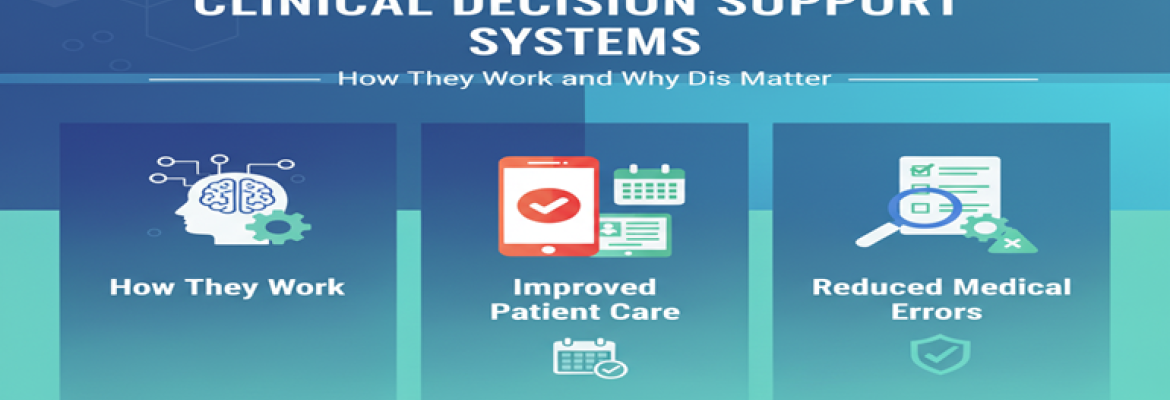
Clinical Decision Support Systems: How They Work and Why They Matter
Clinical decision support systems are tools that help doctors and care teams make better choices by providing timely, evidence-based information. These systems analyze patient data and offer suggestions, like alerts for potential drug interactions or reminders for preventive care, without replacing human judgment. They integrate with electronic health records to deliver insights right when needed, improving overall care quality and safety.
Many healthcare organizations use these systems to reduce errors and streamline workflows. By catching issues early, they help avoid mistakes that could harm patients. For example, a system might flag a medication that could interact badly with a patient's existing prescriptions, allowing the doctor to adjust the plan quickly.
Key Benefits of Clinical Decision Support Systems
These systems bring real value to healthcare by making processes smoother and decisions more reliable. Here are some of the main advantages:
- Better Patient Safety: They reduce risks like incorrect dosages or overlooked allergies through real-time alerts. This leads to fewer adverse events and safer treatments overall.
- Improved Efficiency: Clinicians spend less time searching for guidelines or double-checking details, freeing them up for direct patient care. This can cut down on unnecessary tests and speed up daily tasks.
- Personalized Care: By reviewing a patient's full history, including genetics and past treatments, the system suggests tailored options that fit individual needs. This helps with everything from chronic disease management to preventive steps.
- Cost Savings: Organizations see lower expenses by avoiding redundant procedures and reducing hospital readmissions. Better resource use means more efficient operations without wasting time or money.
- Enhanced Outcomes: Studies show these systems boost adherence to best practices, leading to higher quality assurance and user satisfaction. They also support research by analyzing large data sets for trends and improvements.
In cardio-renal-metabolic care, for instance, these systems have shown clear clinical benefits, such as better guideline adherence and patient satisfaction.
Steps for Successful Implementation
Putting a clinical decision support system in place requires careful planning to ensure it fits into daily routines without causing disruptions. Start by assessing your current workflows and identifying where support is most needed, like in diagnostics or medication management.
Next, choose a system that integrates well with your existing electronic health records. This ensures data flows smoothly and insights appear at the right moment, such as during a patient visit. Involve clinicians early to customize alerts and avoid overload from too many notifications.
Training is essential. Provide hands-on sessions so teams understand how to use the system and interpret its suggestions. Test in a small group first to measure impact on efficiency and error rates. Monitor key metrics like alert response times and patient outcomes to refine the setup over time.
Finally, address potential challenges like data quality issues or workflow disruptions by standardizing inputs and starting with focused features. This step-by-step approach helps the system become a trusted part of the team.
Common Challenges and How to Overcome Them
No system is perfect, and implementation can bring hurdles. One issue is alert fatigue, where too many notifications lead to them being ignored. Solve this by prioritizing critical alerts and allowing customization based on user feedback.
Another challenge is poor data quality, which can lead to unreliable suggestions. Ensure inputs are standardized and complete to maintain accuracy. Interoperability between systems can also be tricky, so select tools that support common standards for seamless data exchange.
By tackling these early, organizations can maximize the system's benefits and minimize frustrations.
Real-World Examples
In hospitals, these systems have reduced medication errors by providing instant checks during prescribing. Primary care clinics use them for preventive reminders, like vaccinations or screenings, improving population health. Overall, they support a shift toward more proactive, data-driven care.
